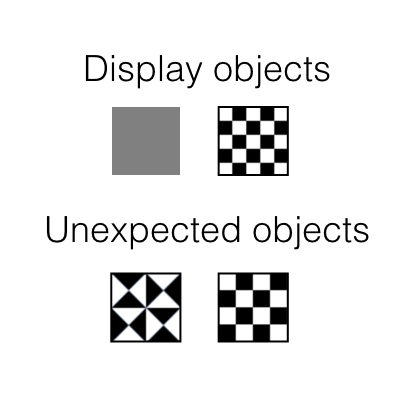The role of similarity in inattentional blindness: Selective enhancement, selective suppression, or both?

Abstract
When people selectively pay attention to one set of objects and ignore another, unexpected stimuli often go unnoticed. Noticing rates are higher when the unexpected object matches the features of the attended items and lower when it matches those of the ignored items. No prior studies have fully disentangled these aspects of similarity; in previous work, the unexpected object fell on a continuum between the attended and ignored objects, so increasing the similarity to one set of objects necessarily decreased it to the other. We designed an inattentional blindness task in which we held similarity to the attended set constant and varied it with respect only to the ignored set, or vice versa. In Experiment 1, objects that were more similar to the attended set were noticed more often and objects that were more similar to the ignored set were noticed less often. Experiment 2, using a different set of unexpected objects, replicated the result that similarity to the ignored set affected noticing, but showed no effect of similarity to the attended set. In both experiments, the pattern of noticing rates differed for similarity with respect to the attended and ignored items, suggesting that suppression of ignored objects functions independently of enhancement of attended objects.
